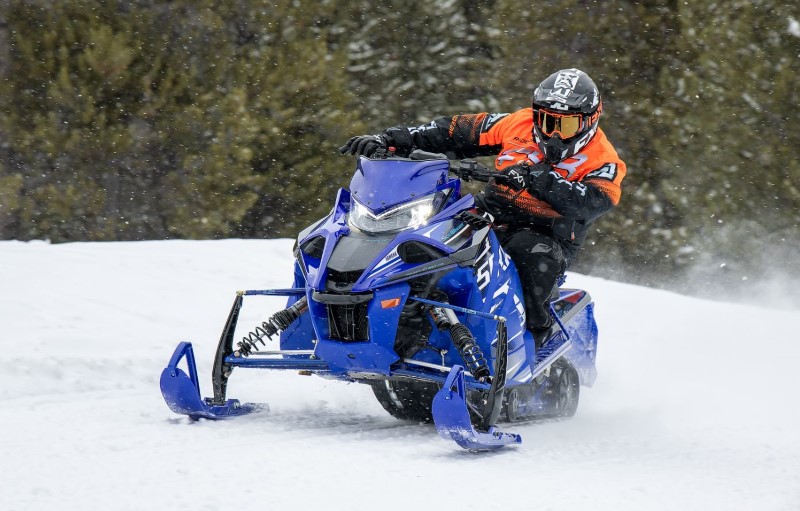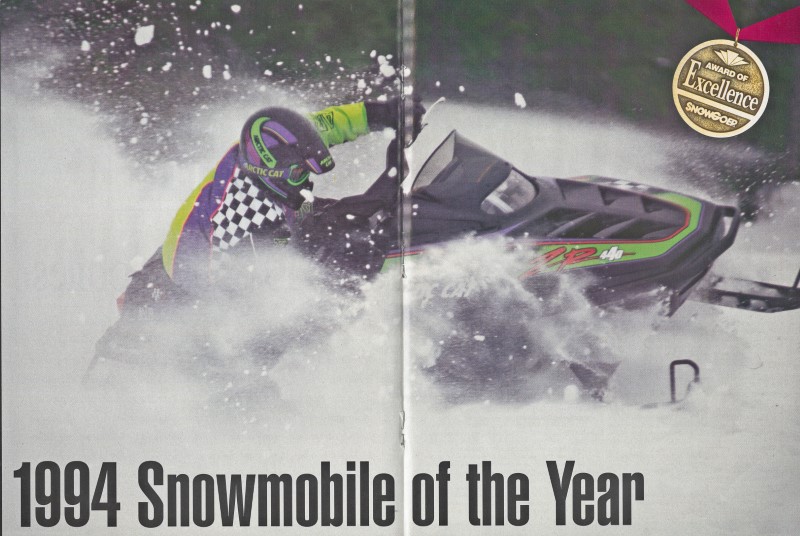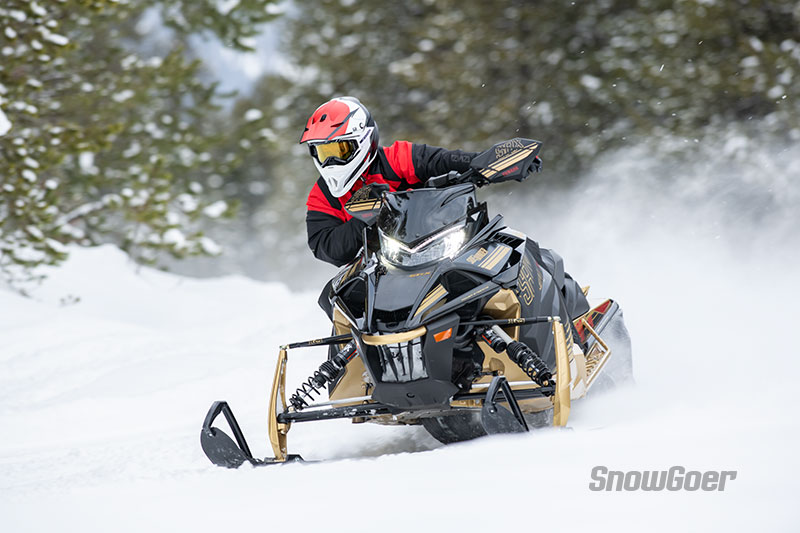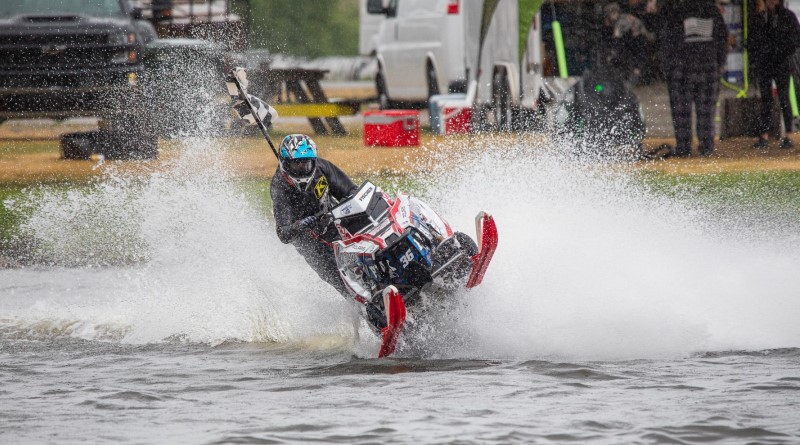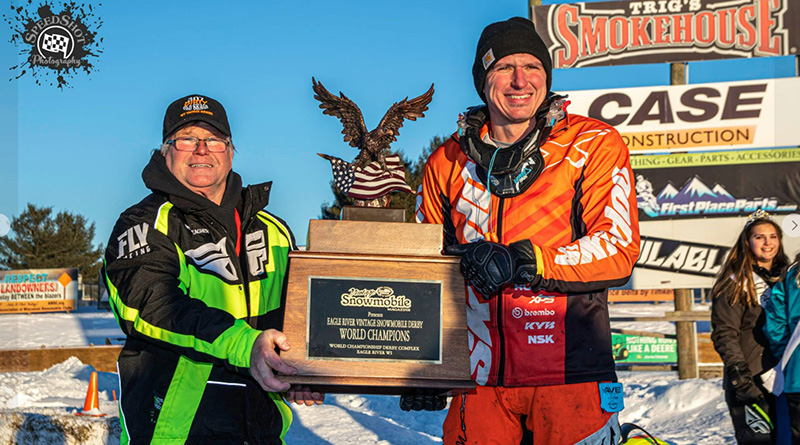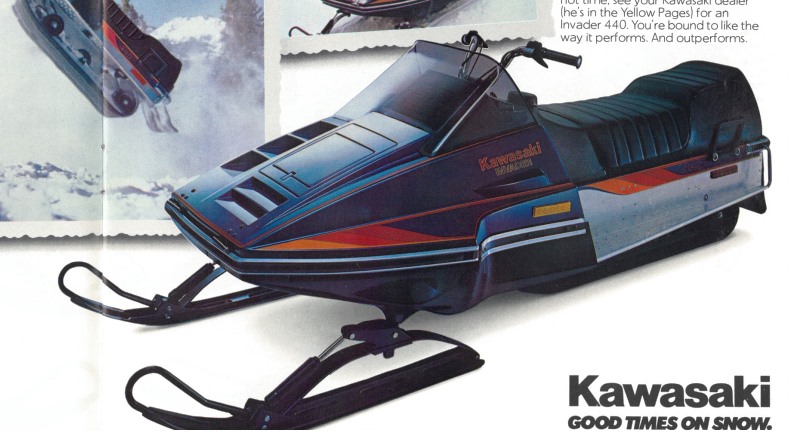 As a snowmobile manufacturing company, Yamaha has the size and strength of a giant and the muscular conditioning of an Olympic athlete. But, those giant muscles haven’t been flexed. Yet.
As a snowmobile manufacturing company, Yamaha has the size and strength of a giant and the muscular conditioning of an Olympic athlete. But, those giant muscles haven’t been flexed. Yet.
Knowing the history of Yamaha in the snowmobile industry, that is one conclusion that came to mind following a seven day tour of the company’s general offices, manufacturing, research and development facilities in Japan.
Yamaha sponsored the Japan trip last May to enable the editors of five snowmobile magazines and, through them, snowmobilers, to become familiar with the company and the product.
The company is large, diversified and efficient. The product reflects a quality, circa 1978, that inspired Yamaha to increase, with quiet confidence, exports to the United States and Canada by 75 per cent to an estimated 35,000 from the 20,000 exported in 1976. The first evidence of a muscle starting to, if not flex, bulge a little bit.
Yamaha Motor Co., Ltd., reported annual sales of $750 million in fiscal 1976. Of that figure, 70 percent or $411 million came from exports. Yamaha Motor Co., Ltd., should not be confused with parent Nippon Gakki Co., from which Yamaha separated in 1955 to begin manufacturing motorcycles. Nippon Gakki, however, still manufactures a number of products that bear the Yamaha name which have no connection with Yamaha Motor Co.— musical instruments, sporting goods and audio products, for example.
Yamaha Motor Co. of its own, however, is sizeable. The company manufactures 1,800,000 motorcycles in Japan and exports to 135 countries in the world. In 18 other countries, Yamaha has motorcycle assembly and manufacturing plants for sub-knockdown and knockdown assembly. In all, Yamaha manufactures 76 different models of motorcycles.
Far from motorcycles and snowmobiles being the total product line of Yamaha Motor as most assume, the diversification is extensive. Yamaha Motor Corp. also manufactures 18 models of outboard motors, 4 models of marine diesel engines, 4 models of generators, 5 models of general engines, 34 models of pleasure boats, 19 models of sailboats, 91 models of fishing boats and 41 models of open-deck work boats.
In addition, Yamaha Motor Co. also manufactures a number of products that you will soon see in the United States, including go-karts, golf carts and sailboats that are already in California.
Yamaha Motor Corp. has grown from 200 employees in 1955 to the present 13,000.
The history of Yamaha snowmobile development and manufacture is a case study in the determination to succeed.
As with most early snowmobile manufacturers, Yamaha began to develop a snow machine to be used for utility purposes in snow covered regions of Japan. Early development work began in 1965 and the first model was marketed in 1967. Since the company had started manufacturing outboard motors in 1960, Yamaha engineers knew that it was folly to consider that an engine is an engine is an engine. Rather, each engine has to be developed for an individual purpose. They had learned, for example, that an engine developed on land (for motorcycles) could not automatically be converted to an outboard motor. Due to their experience with developing outboard motors, they also knew that a successful manufacturer must have extensive knowledge of the medium over which or through which the vehicle will travel.
Thus, Yamaha sent its engineers to universities to study snow. They learned that there were 10 different varieties of snow . . . just in Japan. After shipping the first 7500 units to the United States and Canada in 1968, they also learned that none of those 10 varieties of snow existed in the U.S.
Like the snow, Yamaha also found the riding characteristics of the North American market to be different. Developed for use as a utility vehicle that would successfully travel over snow and used that way in Japan, Yamaha executives were still expressing amazement at how Americans would use the snowmobile.
“We never thought that you people would race so much, would jump so much, would be so performance oriented,” said Yamaha President Hisao Koiki.
“Snowmobiling in the U.S. went toward racing. You always wanted more performance, more horsepower,” said Managing Director Hideto Eguchi.

Yamaha is no longer underestimating the snowmobiler’s desire for performance—a point driven home as we watched test driver Mario Ito, who last year raced the Sno Pro circuit out of the Kalamazoo van, pilot a 1978 SRX, equipped with go-kart tires instead of skis, through the one-fourth mile in 11 seconds from a standing start at Yamaha’s test course in Japan.
Over the years, Yamaha also has taken other lessons learned from the American market and expressed through marketing and engineering personnel at Yamaha Motor Corp., USA, in Buena Park, Calif. The 1978 line-up of Enticers, Exciters and SRX’s are an extreme departure from the mid-engine mounted, bogie-wheel suspensions that characterized Yamaha’s for the company’s first seven years in the industry.
What has remained constant with technology improvements, thanks to early successful engineering development, has been the Yamaha two-cycle snowmobile engine, long regarded as one of the best on the market.
“When we first began studying American snowmobiles, no manufacturer was building their own engines. We knew that the snowmobile required a special type of two-cycle engine. Because of our experience in producing motorcycle and outboard powerplants, we felt that we could produce a snowmobile engine successfully that would be appreciated in the marketplace,” said Eguchi.
Testing
Yamaha’s development of snowmobiles and snowmobile engines continues on an intensive scale. Their laboratory testing facilities for snowmobiles and two-cycle snowmobile engines is, at the least, on a par with the best available among ‘snowmobile manufacturers.
Yamaha spends five months testing a prototype engine before it is housed in a snowmobile. Eight engine dynos are devoted exclusively to testing snowmobile engines. (Forty dynos are used for motorcycle engines). Yamaha’s dynos test for fuel consumption, horsepower, torque, rpm, engine temperature and ignition timing.
Suffering from a lack of snow and cold temperature conditions similar to the United States, Yamaha devised laboratory conditions to simulate actual operating conditions. A controlled temperature room, built at a cost of $600,000 five years ago, can produce temperatures ranging from 40 degrees below F. to 120 degrees F. Another room can also control air pressure to match any elevation to accurately establish fuel flow for exact carburetion.
One of the most impressive of Yamaha’s testing facilities is the sound testing section. Sound, the importance of sound and the testing of sound, has a high priority at Yamaha.
During our interview with Yamaha’s executives, controlling noise levels as they relate to the cost and the total weight of the snowmobile was the third most important area targeted for further perfection by Yamaha.
The noise testing facilities are extensive and impressive. Using computer read-outs, Yamaha is able to analyze and identify noise from a snowmobile and the individual source of all sound emitting from that snowmobile. This analyzes both the formation in which the sound is spreading and the frequency of that sound. The frequency level t e 11 s Yamaha technicians whether the human ear can hear that individual noise and how offensive it will be. The sound formation pattern tells them where that sound is going—spreading in a broad, circular pattern, going to the left side, right side, straight up, into the track, etc.
In addition to Yamaha’s laboratory sound testing equipment, the “sound” room was also impressive. Padded with acoustical foam, the room is close to a sound vacuum. The room even features an elevated grid floor to remove the noise vibration of the ground from an analysis of any object tested. Composed of glass, foam and air, the walls of the room are three feet thick. Since sound is such a new area for most laymen such as snowmobile editors on the tour, the amazing concept was that this room that is almost a “sound” vacuum still produces 12 db (AJ when no one or nothing is in the room. Approximately 34 to 40 db (A) is the lowest sound level that the human ear can hear.
Manufacture
Japan’s and Yamaha’s approach to manufacturing is different than the approach used in the United States. Since both approaches produce quality products, it is difficult and even beside the point to say which approach is better.
While the worker is considered very important in Japan, the level of automation has been employed as quickly and as extensively as technology will allow. We saw a high degree of automation, particularly in engine manufacture and in parts distribution.
In engine manufacture, a number of quality control steps, such as checking the crankshaft against specifications, is accomplished via machine. The massive heat treatment facility of the engine factory in Hamakita is fully automated as massive computers control the 20 furnaces that heat treat shafts, gears, sprockets, crank pins, etc. With each “batch” baked approximately 6 hours, the computer tells the furnaces when the carbonization of each group of parts is done. The furnaces run 24 hours a day, seven days a week. Depending on the destined engine part involved, from 100 to 200 parts are placed in each furnace at one time.
Throughout the engine manufacturing process, automation either by large or small machining equipment has been installed when possible. Machining engine parts by automation is not unique to Yamaha or Japan, but at Yamaha, parts are actually passed from one machine to another via another machine through a number of different machining steps, as each does its specified task and the machined part continues on down the manufacturing line.
The parts distribution center in Hamamatsu is also computerized and automated. The central part and most visually impressive area of the parts distribution center is the actual parts storage area that comprises eight rows of bins that are 262 feet long, and 36 feet high.
The parts storage area is 65 feet wide. Each row is manned by a manually controlled “parts picker” or monolift that zooms up and down and back and forth on the row picking the parts to fill an individual order. Before the parts picker receives a parts order, a computer has arranged the ordered parts in order of location in that individual row.
The individual order, when filled, is placed on a central conveyer which eventually splits into 15 individual conveyers (10 are for export and 5 are for outlets in Japan). One man working in conjunction with a computer directs each parts order to the correct individual conveyer for shipment. When the parts order reaches the shipping area, another computer prints the label, the case number and where to ship it.
While Yamaha has 12 manufacturing plants located throughout Japan, the main offices, main snowmobile and motorcycle manufacturing facilities, research and development and parts center are located at Hamamatsu.
On the final snowmobile assembly line at the Hamamatsu pant, 150 employees, working only one shift, turn out 400 snowmobiles a day from 38 separate assembling stations.
Snowmobiles are manufactured from May 1 through the middle of October. Quality control also plays a major role, as personnel start and test each snowmobile as it rolls off the assembly line.
By way of comparison, the Hamamatsu motorcycle manufacturing plant produces 7,000 motorcycles a day.
In spite of the massive automation in Japan, the worker is highly regarded. Automation, due to the manpower shortage, is necessary for Japan to hold its position in the industrialized world. The worker also holds his company in high esteem.
Observing the roles of employer and employee in Japan was a unique educational process for me. In Japan, at Yamaha, for example, when an employee is hired, both the company and the employee make what seems to be a lifelong commitment. A worker being fired or discharged is almost unheard of in Japan, as it is also extremely rare for an employee to resign or switch to another company. Workers seem to retire, not resign. An average employee in one of Yamaha’s manufacturing plants is paid approximately $360 a month, plus he would normally receive a 600,000 Yen ($2,181) bonus twice a year. In addition, the Japanese company will either provide company housing or contribute to the monthly rent in other housing. About 30 per cent of Yamaha’s employees live in company housing. Lunches are provided the employee at a cost of $7.20 a month. An employee usually receives a 10 per cent wage increase per year.
In a number of cases, the company will also pay the wife approximately $50 per month.
With unemployment being virtually non-existent, a worker knows that no matter how automated a company or manufacturing process becomes, he will always have a job there. As a result, the employee works hard to learn his job and do it quickly and expertly.
This meticulous care in work accomplished is evident in every product that Yamaha produces which an increasing number of Yamaha snowmobile owners will continue to appreciate.

